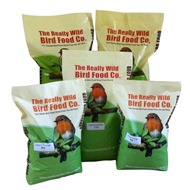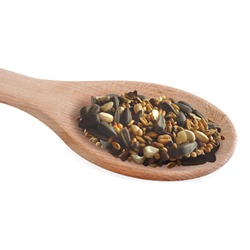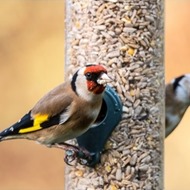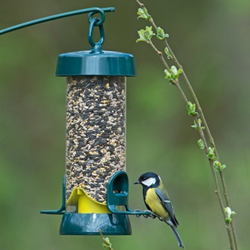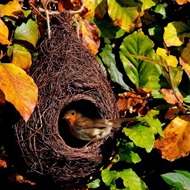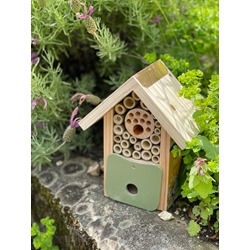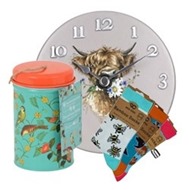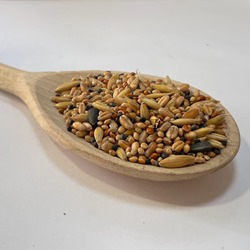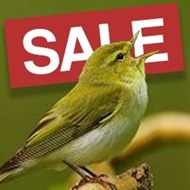
Wood Pigeon Nestlings (September 2012). Original photo by nottsexminer. Licensed under CC BY-SA 2.0.
If you find a baby pigeon (also known as a squab) that seems to be in need of help, there are a few different steps you need to take…
1. Assess the Situation
Before jumping into action, you will need to take a moment to assess whether the baby pigeon actually needs help.
- Is it injured? If the pigeon is bleeding, limping or appears to be physically hurt, it likely needs immediate assistance and you should seek veterinary help.
- Is it alone? Young pigeons are often left alone for short periods of time while the the parents forage for food. If the pigeon appears healthy, it is probably just waiting for its parents to return and therefore should not be moved as this can cause extreme stress for both the baby and the adults.
- Is it in immediate danger? If the pigeon is in a location where it could be easily harmed, such as a busy road or exposed to predators, moving it to safety may be necessary. However, if you are moving the bird to a safe location, make sure you use gloves or a towel to handle it as human scent can cause some birds to reject their young.
2. Create a Safe and Warm Environment
If you have assessed the situation and you believe the pigeon is truly orphaned but appears healthy, you can attempt to care for it temporarily.
The first thing you will need to do is keep the fledgling warm. Find a box or cage and add a heating pad set on low or a warm water bottle wrapped in a towel. You can then create a soft nest using a small bowl lined with towels or blankets so that the pigeon feels warm and safe. Place the box in a quiet, dark and low-traffic area to minimise stress.
3. Feeding a Young Pigeon
If the pigeon is a nestling – i.e. very young with no feathers – it will need to be fed pigeon formula or baby bird food, which can be found at pet stores and wildlife rehab centres. Never feed baby pigeons worms, bread or dairy milk as this can make them sick.
Young pigeons will typically be fed by their parents around every 2 to 3 hours, however as they get older, this can decrease to 4 to 6 hours. You will need to gently offer food using a syringe or spoon, mimicking the parent bird’s feeding behaviour. As the pigeon grows, you can gradually transition the food consistency from thin and watery to thicker.
It is also essential that you provide the fledgling with clean, fresh water in a shallow dish.
4. Monitoring and Care
While caring for the young pigeon, you will need to keep an eye out for any signs of distress. If the pigeon seems sick, lethargic, has lost its appetite or is unable to stand, seek veterinary advice as soon as possible.
It is also important that you keep the enclosure clean and dry to prevent illness.
Raising a pigeon is no easy task and it is always best to contact a licensed wildlife rehabilitator as soon as you find any sick or orphaned pigeon in the wild as they will have the experience and resources to release the pigeon back into the wild once it is ready.
Although it is usually best to let nature take its course, contacting wildlife experts and temporarily providing care could be the difference between life or death for a baby pigeon!
If you have any further questions about bird care and feeding, please don’t hesitate to get in touch with us at Really Wild Bird Food.
Contact Us
 Back
Back Bird Foods
Bird Foods
 Seed Mixes
Seed Mixes Straight Seeds
Straight Seeds Mealworms & Worms
Mealworms & Worms Chicken Feed
Chicken Feed Duck Food
Duck Food Peanuts & Peanut Butter
Peanuts & Peanut Butter Suet & Fat Balls
Suet & Fat Balls No Mess Bird Seed
No Mess Bird Seed Wheat Free Bird Seed
Wheat Free Bird Seed Sunflower Seeds
Sunflower Seeds Softbill Bird Food
Softbill Bird Food Bulk Bird Seed
Bulk Bird Seed Trial Packs
Trial Packs Pick & Mix
Pick & Mix Mini Pick & Mix
Mini Pick & Mix Birdie Basics: Budget Bird Food
Birdie Basics: Budget Bird Food Food for Small Birds
Food for Small Birds Back
Back Bird Feeders
Bird Feeders
 Seed Feeders
Seed Feeders Peanut Feeders
Peanut Feeders Peanut Butter Feeders
Peanut Butter Feeders Suet & Fat Feeders
Suet & Fat Feeders Window Feeders
Window Feeders Hanging Feeders
Hanging Feeders Feeding Stations
Feeding Stations Ground Feeders
Ground Feeders Easy Clean Feeders
Easy Clean Feeders Bird Tables
Bird Tables Seed Trays
Seed Trays Bird Baths & Drinkers
Bird Baths & Drinkers Feeder Accessories
Feeder Accessories Feeder Hygiene
Feeder Hygiene Squirrel Proof Bird Feeders
Squirrel Proof Bird Feeders For the Kids
For the Kids Niger Seed Feeders
Niger Seed Feeders Mealworm Feeders
Mealworm Feeders Bird Food Storage
Bird Food Storage Fat Ball Feeders
Fat Ball Feeders Tube Feeders
Tube Feeders



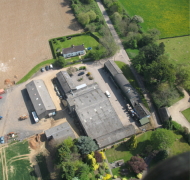 Our Farm
Our Farm
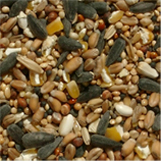 Tips & Advice
Tips & Advice
Contact Us

